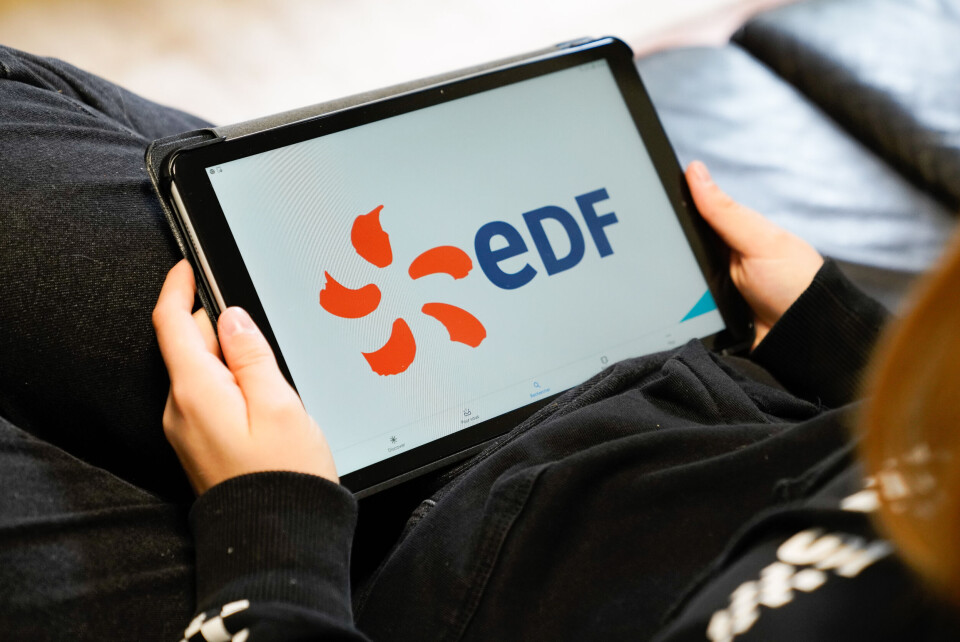-
More than 5,000 French communes use AI to identify poor rubbish sorting
Badly-sorted rubbish can cost millions so communes are turning to high-tech solutions
-
Tax on well-off retirees under consideration for 2026 budget
‘Nothing is off the table’ when it comes to finding €40 billion in savings says Labour Minister
-
Nice airport records passenger boom as tourists flock to city
Airport figures exceeded the pre-Covid record last year, with US visitors significant contributors
Tens of thousands in France sign up to EDF energy saving Tempo plan
More than 60,000 households have changed to the tariff which entices clients to lower consumption at peak-usage times in the past two months

Tens of thousands of people in France have signed up for the EDF Tempo offer in a bid to save money over the past two months, many more than the few hundred at the start of the year.
Electricity company EDF said that more than 7,000 people had signed up for the deal every week for the past two months, compared to just 100 per week in the first quarter of 2022. It means more than 60,000 have joined and 200,000 people are on the tariff nationwide.
EDF previously said that it wanted to have five million households nationwide on the plan.
EDF has 70% of the market for individual households and 55-60% of the market for business customers.
The EDF Tempo tariff encourages customers not to consume during ‘red’ periods (high tension times), equating to around 22 days per year. This effectively ‘erases’ them from the network, meaning overall electricity consumption goes down.
This could be particularly useful in times of high usage and low supply, such as this winter, when repairs and maintenance on nuclear power stations across France mean that power cuts could be a real possibility. The country is preparing contingency plans in case a shutdown is needed.
Read more: How likely is it that France will require power cuts this winter?
Read more:How would planned power cuts affect schools in France?
What is the Tempo plan?
The Tempo plan was created in 1998 and was the successor to the EJP (Effacement Jour de Pointe).
Benoît Lamberti, marketing and client experience director at EDF, said: “The philosophy is the same: send a tariff signal that shows the days during which consumption is high, or there is a good reason to ease the electrical system.”
How does the Tempo plan work?
The Tempo plan works with a colour code. In a ‘blue period’ (300 days per year), users benefit from prices that are 30% lower at peak times (from 06:00 to 22:00) and 41% lower at off-peak times, compared to the regulatory price.
During the 43 ‘white days’ (low use), savings are still at 10% at peak times and 34% at off-peak. In contrast, during the 22 ‘red days’ (which occur between November 1 and March 31), the price per kWh is three times higher than the normal rate. This is designed to encourage people to use less energy.
Even on red days, users can save up to 16% during off-peak hours if they cut down on usage.
Clients receive a message by SMS or email alerting them that the next day will be a red day. The colour also shows up on their meter from 20:00 the night before to give them an early warning.
Avec RTE, ce matin tout baigne pour les prochains jours avec 18% d'importation.
— Varume (@Varume1) December 7, 2022
Tarif EDF Tempo, jeudi jour rouge. pic.twitter.com/Af5SttOkYN
Electricity use drops
It comes as electricity consumption dropped by 10% nationwide in November, and people appeared to be monitoring their usage more closely.
Executive director of EDF, Marc Benayoun, said: “We have had 140 million logins on our EDF & Moi app, which enables people to monitor their consumption. That’s twice as high as last year.”
Related articles
Should I switch appliances off ahead of a French power cut?
French power cuts: how can we know if power is back OK at second home?
Power cut plunges central Paris into darkness
























